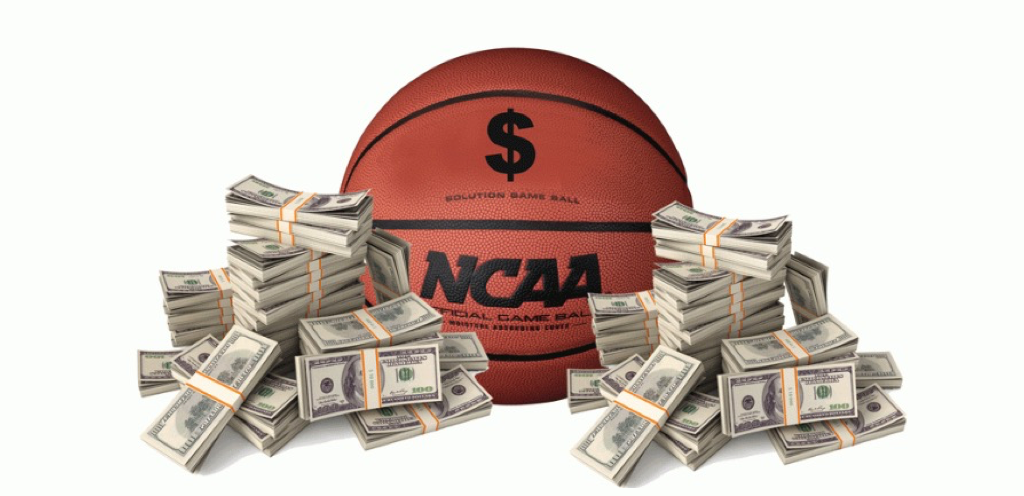Like millions of Americans, every year I sit down and fill out a college basketball NCAA tournament bracket. Do I hope to pick the winner on the nose? Sure that would be amazing. Do I expect to get the Final Four right? Hmmm… no. No, I don’t. The odds of getting a perfect bracket are estimated at 1 in 128 billion. You have better odds of winning the Powerball. So why do I do it?
- Well for one, I am a Villanova Wildcat, so I have some skin in the game, which makes it that much more exciting (I have Nova going all the way of course).
- The fact that the tournament has so many twists and turns is pretty exciting. I mean, come on, how much fun is it to see the 11th-ranked Loyola Ramblers advance to the Final 4?!
- There are clear winners and losers. Once the clock stops I know who won each game.
- I know that by the beginning of April I will know exactly how my bracket did.
- Lastly, stake wise, I can afford to lose the $20 fee.
In other words, the NCAA tournament offers me high uncertainty in a fun, contained, and cheap way.
Now I am obviously not a basketball expert, and as much as I love the game, it’s not where my talents lie. That said, there are some parallels that we can draw between the March Madness brackets and the financial markets.
With the U.S stock market becoming a lot choppier in the past few weeks it’s not far fetched to say that the markets have had their own version of March Madness, with many experts trying to predict the culprit of the increased market volatility. Is it the fear of rising inflation? Is it the Federal Reserve raising interest rates? Or is it the machines?!
At the bottom of this blog post, I’ve created a March Madness Market Sell-Off Bracket which includes the top 64 risks that the market faces. Go ahead. Scroll down real quick… I’ll wait.
Yeah, a lot right?
Here is the thing, unlike college basketball that only has one month of “madness,” the market is ALWAYS pricing in a list of risks this long. Every day, all year round. And this is where the NCAA tournament differs from investing.
Although on a daily basis, anything can happen in the market in a similar way to March Madness – like UMBC beating out Virginia. A major difference, however, is that there is no “Final Game” in investing. In other words, it is a never-ending tournament.
So What’s the Point?
Unlike March Madness, do not let the blow-by-blow market commentary draw you in to “play the market” by buying and selling with every twist and turn that the market delivers. Your serious money should be invested based on YOUR goals and YOUR time horizon! As I have stated before, do not the let short-term market volatility dictate your long-term strategy. Start with a plan, revise that plan as your circumstances change rather than as a result of what the market delivered on a weekly or monthly basis.
If you enjoyed this post, check out NBA Player Salaries, As Crazy As You Think?
March Madness Market Sell-Off Bracket: Market Risks That Will Drive A Sell-Off
North
1) Trade tariffs leading to trade wars
2) Inflation rising too fast
3) Historically low bond yields
4) Rising bond yields
5) Italian elections in April
6) The UK reversing Brexit
7) European Central Bank unexpected interest rate hikes
8) North & South Korea military conflict escalating
9) China cyber attacks in the U.S.
10) Euro plunges as EU power shifts towards Eastern Europe
11) Google data breach
12) “Run on” Italian banks
13) Microsoft data breach
14) Merkel unable to form Coalition
15) Iraq-Iran tensions escalate
16) Housing bubble bursting in Norway
South
1) Federal Reserve hiking interest rates too fast
2) Investor overconfidence
3) Facebook data security concerns
4) High U.S. auto market credit levels
5) The housing bubble in Canada
6) US tax cuts repealed
7) Russia Mueller investigation
8) US midterm election
9) Bank of Japan unexpected hike of interest rates
10) Possible Russia military attacks to U.S. allies in Eastern Europe
11) Chinese corporate leverage
12) U.S. debt ceiling breach
13) South China Sea conflict escalation
14) Large U.S. bank security breach
15) Venezuela regime collapse
16) Iraq-US tensions escalate
West
1) Corporate earnings slowdown
2) Tech sector sell-off
3) Historically high stock valuation
4) High U.S. corporate leverage
5) End of NAFTA
6) Collapse in China real estate prices
7) U.S. deflationary pressures
8) Possible ISIS attacks
9) Possible Russia cyber attacks in the U.S.
10) Chinese internal regime conflicts
11) Brexit uncertainty
12) Japanese Yen plunges
13) U.S. junk bond sell-off
14) Syria conflict escalation
15) Housing bubble bursting in Australia
16) South African “Arab spring” moment
East
1) Global growth slowdown
2) Energy price shock
3) U.S. dollar fall
4) Volatility trades going wrong
5) North Korea/U.S. escalations
6) Spike in U.S unemployment
7) US-Iran relations deteriorating to military conflict
8) European bond yields spike
9) Possible Russia cyber attacks in Europe or Asia
10) Chinese Yuan plunges
11) National security cyber attacks
12) Amazon data breach
13) European junk bond sell-off
14) Saudi Arabia regime internal conflict
15) Cryptocurrency large sell-off
16) India-Pakistan tensions escalate



